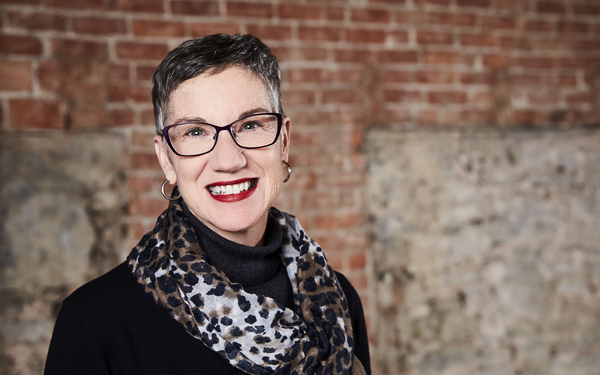
Helping People Fall in Love with your Orchestra
At Orchestras Canada’s Ontario Music Directors’ Meeting on January 19th, we welcomed Carol Kehoe as a special guest. Carol has more than 25 years of experience in leadership roles at arts organizations such as Museum London, the Grand Theatre, the Hamilton Philharmonic Orchestra, and Tafelmusik Baroque Orchestra and Choir, where she has recently been appointed Executive Director.
We invited Carol because we knew that she could address, in practical and humane ways, the many questions that group members had about their relationship with their orchestra’s governance, audience development, and fundraising efforts.
For members of this group (and many others like them in other parts of Canada), serving as music director is not a purely artistic role. As one of the very few (or perhaps the only) people paid to get things done in their organizations, smaller-budget orchestra music directors are often called upon to get involved in fundraising, strategy development, human resources, volunteer management, public positioning, and beyond.
Fundraising
In Carol’s view, smaller organizations need to be “scrappy” and fight for opportunities to share your stories in your community. An important first step: define your role in the community. Are you THE only orchestra, or do you play a complementary role to other orchestras and musical groups around you? What makes you unique? Do you provide orchestral music to underserved parts of your community? Is your membership distinctive? Is your repertoire unique? It can be useful to look at municipal cultural and strategic plans to see how your goals might align with that of the city or region you are in. How is your orchestra uniquely positioned to help your community reach its goals?
With this vital information in hand, you and your organization can then start discussions with potential partners. It’s not a one-way discussion: you’re looking to listen and learn. If your potential partner doesn’t specifically support the arts, they may be interested in supporting children’s programs, or emerging talent, or one of the other amazing activities your organization does.
Building these relationships takes time, and never really ends. It’s often easier to keep an existing partner than to find a new one, so it’s important to acknowledge the people and organizations who have helped you in the past. Perhaps you, a board member or a musician can call donors to thank them, or write them handwritten notes. What about using special occasions like Valentine’s Day and Thanksgiving to send cards, just so they know what their support means to your orchestra?
Governance
Board recruitment is difficult, and it’s only getting harder. While in the past, the business community were encouraged or even told to get involved in the governance of non-profit organizations, this is no longer the case. Volunteers tend to want to be involved in short-term projects, rather than being financially responsible for something long-term.
In much the same way as defining your orchestra’s role in the community before approaching potential donor or sponsor organizations, this is also important when recruiting to your board of directors. Help people fall in love with your organization by finding a set of definable ‘selling points’ for potential new board members. Why should they give their time, connections and money to you? It can be useful to start with low-hanging fruit: work with your nominating committee and go into your community to find people who already love what you do. Get them on board first.
Boards of directors have responsibilities of fiduciary oversight, ensuring that mission and money are aligned. Over time, non-profits have asked our boards to expand their roles, to be all things to all people. We can and do rely on our boards for all kinds of things – from connections, to donations, and, in smaller organizations, even day-to-day orchestra management, operations, and marketing. Whether we want to have a board that’s more hands on, or less, it’s critical to have processes and people to help your orchestra get the right people involved, and to ensure that these partnerships are beneficial for both parties. Music directors, as staff leaders, can help create the environment in which this can happen.
We’d like to thank Carol Kehoe for sharing her time, energy and considerable expertise with OC and our members.
